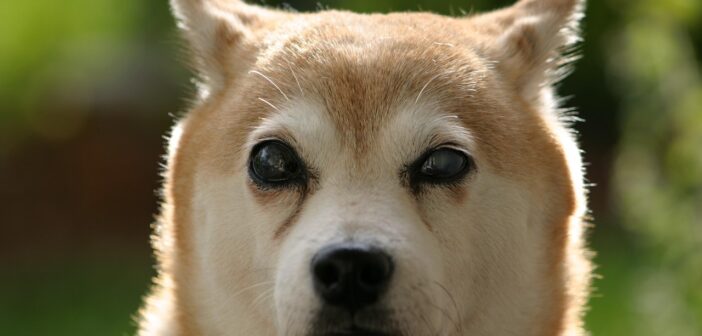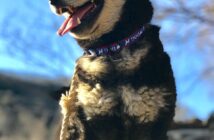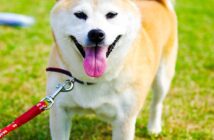Bringing home a rescue Shiba Inu is a heartwarming experience—but the first 30 days can make or break your long-term bond. A structured timeline will help ease anxiety (for both of you), build trust, and set your dog up for a happy, well-adjusted life.
Whether you’re adopting through a local rescue or a national Shiba Inu organization, this day-by-day plan is designed for U.S. pet owners who want a smooth transition.
Why the First 30 Days Matter
Experts agree that the first month is critical. According to the American Kennel Club, Shiba Inus are “alert, independent, and sometimes aloof,” making early routine-building essential.
Veterinarian Dr. Amanda Soto from Dallas, TX, adds, “The first 30 days are about predictability. The more structured the environment, the faster a Shiba Inu feels secure.”
Pre-Adoption Checklist (Before Day 1)
Before your Shiba Inu arrives, make sure you’ve prepped your home:
- Buy the basics: crate, food, leash, harness, toys, ID tag
- Set up one safe room with a crate and water
- Research local vets, especially those with experience in small, high-strung breeds
- Schedule the first vet visit within 5–7 days of arrival
- Pet-proof the home (Shibas are escape artists!)
- Stock up on a 30-day supply of the same food used by the shelter/rescue
Read: How to Prepare Your Home for a Rescue Shiba Inu
🗓️ Days 1–3: Let Them Decompress
Goal: Create safety and observe behavior
Key Focus: No pressure, no guests, minimal movement
Your Shiba Inu is in shock—this is the “decompression period.” Avoid excitement or pressure to interact. Stick to a quiet routine with short leash walks around the yard or block.
Tips:
- Use a calm voice
- Sit quietly near them while they explore
- Feed in the same location each day
- Avoid touching without permission—let them come to you
- Keep them leashed indoors if necessary to prevent escapes
Expert Insight:
“Let them watch and learn your habits. That’s the first trust exercise,” says Jessica Kline, a volunteer at Shiba Inu Rescue of Texas (SIRTx).
🗓️ Days 4–10: Build the Daily Routine
Goal: Introduce structure & crate training
Key Focus: Meals, potty times, short training sessions
Morning Routine Example:
- 7:00 am: Leash walk (10–15 minutes)
- 7:30 am: Breakfast in crate
- 8:00 am: Calm alone time
Evening Routine Example:
- 6:00 pm: Walk
- 6:30 pm: Dinner
- 7:00 pm: Light training/play
- 9:00 pm: Bathroom break
- 9:30 pm: Crate for bedtime
🦴 Crate Training
Introduce the crate as a cozy place, not a punishment. Add a blanket, treat-stuffed toy, and soft background music.
Learn more: Crate Training Tips by Humane Society
🗓️ Days 11–15: Vet Visit & Health Screening
Goal: Rule out hidden health issues
Key Focus: First full exam, vaccinations, parasite checks
Your rescue Shiba may not have full vet records. Even if they do, always schedule your own full-body wellness check.
📋 Ask your vet to:
- Review any past vaccine records
- Screen for hip dysplasia, allergies, or dental issues
- Test for parasites or heartworm
- Check microchip registration
According to VCA Hospitals, Shiba Inus are prone to allergies and eye issues—early detection makes all the difference.
🗓️ Days 16–20: Socialization Window Opens
Goal: Slow introduction to people, pets, and new places
Key Focus: Low-stress exposure
Shibas can be reactive. Introduce one variable at a time—don’t take them to a dog park just yet.
Activities:
- Car rides with you
- Walks around unfamiliar blocks
- Sit outside a pet store or coffee shop and let them people-watch
- One calm visitor in your home
🐾 Real Example:
When Laura in San Diego adopted her 2-year-old Shiba, she invited her neighbor to toss treats across the yard—not hand-feed. “It built trust without pressure,” she says.
🗓️ Days 21–25: Early Red Flags & Adjustment
Goal: Observe for behavior issues or health signs
Key Focus: Stress indicators and triggers
By now, your dog is more relaxed, and their true personality begins to show. But this is also when problems may appear:
Watch for:
- Food guarding
- Resistance to handling (paws, ears)
- Overreacting to sounds
- Peeing when excited or stressed
- Escape attempts
🚩 If you notice severe fear or aggression, contact a Certified Dog Behavior Consultant (CDBC) through the IAABC.
🗓️ Days 26–30: Bond Building & Enrichment
Goal: Strengthen your bond and confidence
Key Focus: Training, enrichment, and future planning
This is the start of the “honeymoon period.” If you’ve laid the groundwork, your Shiba will begin to seek you out, follow your cues, and show their goofy, playful side.
Activities:
- Teach 2 basic commands: “Sit” and “Leave It”
- Introduce interactive feeders (like a KONG Wobbler)
- Try low-impact games like sniff walks or treat treasure hunts
- Start short alone-time sessions to prevent separation anxiety
📊 Bonus: 30-Day Shiba Inu Transition Timeline Overview
| Day Range | Focus | Key Milestone |
|---|---|---|
| 1–3 | Decompression | Feels safe in one room |
| 4–10 | Routine & crate intro | Eats, sleeps, potty on schedule |
| 11–15 | Vet visit | Baseline health established |
| 16–20 | Social exposure | Begins engaging with environment |
| 21–25 | Observation phase | Personality and red flags emerge |
| 26–30 | Bonding & enrichment | Starts connecting with family |
Case Study: From Shutdown to Shine
Dog: “Kuma,” 3-year-old male Shiba
Adopted from: NYC Shiba Rescue
Owner: Mark P., Brooklyn, NY
Problem: Hid in crate for 5 days, refused to eat unless alone
Plan: Used scheduled feeding, soft praise, crate cover
Outcome: By Day 12, Kuma was following Mark around. By Day 30, he mastered “Sit” and “Touch” and could ride in elevators calmly.
“Having a daily checklist helped me stay calm, even when he wasn’t. Kuma is my shadow now.” — Mark
Final Tips: What Happens After 30 Days?
You’re not done—but the foundation is laid.
- Continue training and socialization weekly
- Consider group training classes for ongoing structure
- Update your vet with any new behavior developments
- Celebrate the small wins—Shiba Inus bond deeply when you earn it
🐕 Looking ahead? Read Shiba Inu Health Issues & Early Detection and How to Train a Stubborn Shiba Inu.
Conclusion
The first 30 days of your Shiba Inu’s new life are all about routine, patience, and trust. With a thoughtful, human-centered timeline, your rescue Shiba can transition from fearful to confident, independent to affectionate—all while knowing they finally belong.
Start strong. Love steady. And you’ll earn the loyalty of one of the most spirited dogs in the world.



